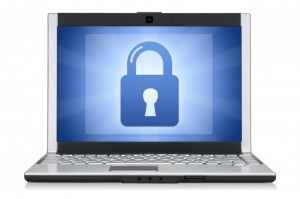 A colleague of mine recently learned a difficult lesson when her computer was stolen from her car. At first, she was mostly concerned about having lost all of the work (she’s a writer) that was stored on her machine. Sadly, there was a lot more than poetry at stake: her entire identity was at risk.
A colleague of mine recently learned a difficult lesson when her computer was stolen from her car. At first, she was mostly concerned about having lost all of the work (she’s a writer) that was stored on her machine. Sadly, there was a lot more than poetry at stake: her entire identity was at risk.
While using one password for all the secure sites she visited seemed smart at the time, it turned out to be a disaster. It was anything but smart. One little password gave the thief access to literally every aspect of her life: banking records, bills, medical records, emails, social networks and more.
To put this in perspective, think of what we already do in the real world. We have a different key for everything that matters – house, car, safe-deposit box, gym locker, work, file cabinet, desk drawers, etc. And yet, many of us do what my colleague did — use the same password across multiple websites from social media to online banking to shopping sites. Many of us learn the lesson of safeguarding personal security after it’s too late.
The good news is that this kind of privacy invasion can be avoided with some relatively easy steps. Exercise caution in choosing passwords by selecting passwords that can’ t easily be connected to you. Names of loved ones and important dates (births, anniversaries) are too easy to guess. Passwords that contain combinations of numbers, characters, and letters are great choices. If you have a laptop you frequently travel with, even if it’ s just to your local coffee shop, consider turning off your browsers’ password storage function. You’ll notice this function when a pop-up comes up asking you if you want to store this password.
Most importantly, use a different password for every site that matters, just like you do with your keys. Examples of sites that matter are sites for banking, mortgage payments, bill pay services, online shopping, and social media sites where you share your personal life with family and friends. If all your passwords are the same and someone fraudulently obtains your login info for one site, they will have obtained ALL your passwords in one small coup.
Different logins for everything might sound daunting but not only is this the single best way to protect your valuable information, it is also not as terrible as it sounds. Thankfully, there are many password storage sites and pieces of software that are fairly priced or totally free that will help you keep track of your passwords. For example, try using software like Password Locker to keep all of your passwords organized and secure.
Choosing hack-proof passwords and different log-ins for different sites have saved thousands of people money, time, and hassle by making their personal and financial information that much more secure.
And we can all appreciate a little more security and peace of mind online.



Follow me